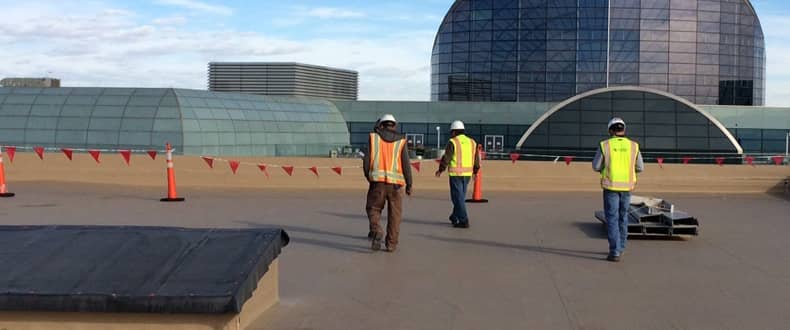Winter is over and spring is here. It’s time to get on your roof and perform some maintenance and housekeeping. The industry recommends inspecting your roof at least twice a year, preferably spring and fall, and also after any major weather event.
Why does it matter?
Damage may have occurred over the winter. Damage from fallen ice, debris or damage from snow removal off a roof in northern climates can occur. Also drains and scuppers may be clogged from debris such as leaves and pine needles, depending on the height and location of your roof. It’s important that you have adequate drainage to ensure the service life of your roof and the safety of the people under your roof.
Who should perform my roof inspection?
A trained in-house person onsite, or an authorized contractor or roofing consultant can perform the roof inspection. Be sure to check with your roofing warranty and manufacturer. They usually have certain requirements for maintenance and inspection of the roof as well as a checklist of authorized contractors for the work. Whoever you choose to perform your inspection, be sure to get a report or log the inspection. Many warranties require a log of inspections and roofing repairs.
What should I do if I find damage to the roofing membrane during my inspection?
Remember, you are the first line of defense. It’s probably a good idea to make a temporary patch and contact your manufacturer as well as the installing contractor. Check your warranty. You need to ensure you are compliant with the warranty and that you do not do anything that could cause a manufacturer to void the warranty. There should be instructions for calling in any damage or deficiencies to the roof. Being the first line of defense, it’s a good idea to have someone on staff with roofing knowledge. Many manufacturers will train a person on how to make a temporary patch or repair and how to identify potential roof leaks.
By performing your inspections and maintenance, you will be proactive in managing your roofing inventory instead of waiting for a roof leak and then reacting by trying to find the cause after the fact. Inspecting and maintaining your roof is the best way to help extend the useful life of it.
-1.png?width=500&height=271&name=FiberTite_Only%20(500px%20wide)-1.png)



-1.png)